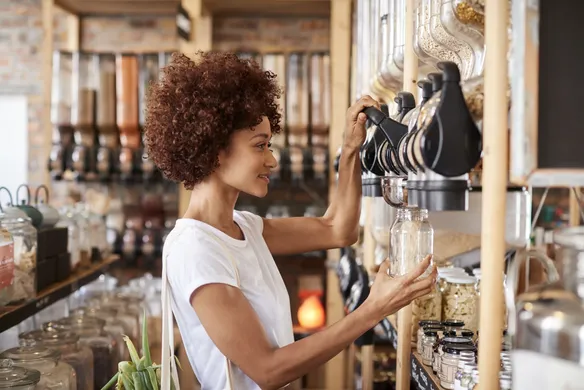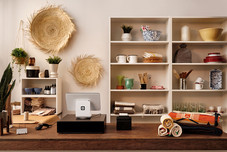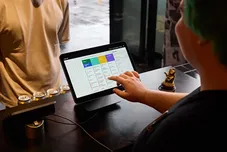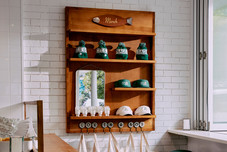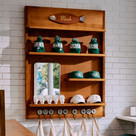Table of contents
What goes around comes around, as they say, and that’s certainly the case with the circular economy. Growing numbers of businesses are embracing a more eco-conscious way of working, looking at how they can recycle their products, minimise waste and become more sustainable.
What is a circular economy?
The circular economy concept has existed for a while – the idea that we should reuse or recycle as many resources as possible rather than bury them in landfill – and it’s gathering mainstream momentum as businesses work hard to establish their eco-credentials and do their bit for the planet.
The threat of climate change coupled with the rising cost of raw materials is forcing businesses to rethink how they operate. Rather than throwing away items that have outlived their initial use, the emphasis has shifted to extending the life cycle and repurposing.
As the Ellen MacArthur Foundation explains, ‘We must transform every element of our take-make-waste system: how we manage resources, how we make and use products, and what we do with the materials afterwards. Only then can we create a thriving circular economy that can benefit everyone within the limits of our planet.’
Principles of a circular economy
Businesses that adopt a circular mindset are ones which prioritise the elimination of waste at every stage, from product design and manufacture through to customer delivery and post-sale.
There are three fundamental tenets to circularity:
Eliminate waste and pollution – Many products are designed to be disposable such as wet wipes, polystyrene drinks cups and crisp packets. They follow a linear path where raw materials are taken, something is made and then it is discarded. Often such items can’t be broken down naturally and end up being burned or buried in landfill for hundreds of years.
In a circular economy, waste is treated as a design flaw and as part of the design process, it is minimised or even eliminated. For example, food waste is returned to the land to enrich soil and fuel new food production.
Circulate products and materials – This means keeping products in circulation at their highest price for as long as possible. When that’s no longer achievable because a product has reached the end of its useful life, the emphasis shifts to considering how its components or raw materials might be used.
Regenerate nature – Instead of continuously taking from the land, this concept focuses on regenerating it by adopting, for example, farming practices which rebuild the soil for cultivating future crops and increase biodiversity.
How businesses can create a circular economy
There are plenty of ways businesses can bring circularity into their operations, whether it’s a microbusiness with just a handful of staff or an SME with 200 employees.
Refill
More and more companies are adopting a refill model – cleaning sprays, cereals, perfumes, shampoos, hand soaps and laundry detergents are just some of the refillable products currently on the market. Source Bulk Foods operate more than 60 stores across Australia. The business focuses on zero waste with customers encouraged to bring in their own refillable containers when they shop.
Repair and refurbish
Repair and refurbish businesses operate along similar lines but while repair simply means mend, refurbish restores the product to its original condition. Apple refurbishes old Macs, iPhones and iPads which it then sells at a reduced rate through its official website.
Reuse
Some companies create reusable packaging or products and offer customers incentives to use them. Starbucks gives customers 50 cents off if they bring in any reusable cup for their hot drink while KeepCup, described as the world’s first barista standard reusable cup, has become synonymous with coffee drinking around Australia. In the fashion world, online brands like The Closet have made second-hand clothing exciting and desirable, with users able to sell their unwanted pieces and snap up a pre-loved bargain. Glam Corner is another fine example of reusable fashion – customers rent designer dresses and send them back rather than pay hundreds of pounds for something they only wear once.
Recycle
Recycling is on everyone’s mind, yet in terms of the circular economy, it’s not top of the list but rather a last resort. Still, it plays an important part once something has reached its end life after being reused or refurbished multiple times, and it can be broken down into its constituent parts. Nike has found a way to recycle its old shoes into new products. Known as Nike Grind, old trainers are turned into everything from outdoor courts and running tracks to new tech accessories made from old leather scraps.
Dead stock
Dead stock is essentially inventory that doesn’t sell, something retail stores typically want to avoid because it sits on the shelf and is counted as a loss. But some retailers are taking dead stock and repurposing – rather than being seen as a loss, these items can become coveted or even vintage and sell at a premium.
Apply the circular economy to your business
You don’t have to be a big multinational to make a difference – grassroots businesses everywhere can play their part:
- Reduce paper use and recycle office paper waste
- Re-examine product design and use materials from sustainable sources
- Switch to recycled raw materials
- Use sustainable/recyclable packaging
- Provide clean drinking water to reduce plastic bottle use
- Refurbish your old electronics
- Consider using second-hand furniture in your office
- Create a food waste bin for your company kitchen
Why does a circular model make sense for your business?
A circular economy isn’t just good for the planet, it’s good for your bottom line too. As well as reducing environmental pressure, it can boost economic growth, increase your competitive edge and cultivate a positive brand image – eco-conscious customers are more likely to pick you over a wasteful competitor. It can also provide job opportunities and establish you as a socially responsible business that people really want to work for.
With the growing urgency surrounding climate change, introducing elements of the circular economy into your business has never been more important. Looking at ways to make your business more eco-friendly is a no brainer, everyone has their part to play, and even small changes can have a big impact down the line.
Circular economy businesses can come in many forms
While these types of businesses can take on many forms, here are a few categories that fall under the circular economy umbrella and how you can better identify them or incorporate elements into your own business model.
Recycle
Recycling is a component of the circular economy but typically considered when there are no other alternatives for reusing or repurposing materials. The goal of circular economy models is to prioritize reducing and reusing materials before recycling. For example, Adidas partners with Parley to create shoes made of recycled ocean plastics. Klean Kanteen, which offers an alternative to single-use plastic bottles, has gone a step further and created a line of 90% post-consumer recycled stainless steel bottles. The company has set a goal for 95% of its line to be made of this recycled steel by 2023.
Repair and refurbish
Businesses that offer repair and refurbishment services are similar, however, refurbishment is considered a step further than businesses that offer repairs. When a good is refurbished it is restored to its original working order and appearance, or better, while a repair is simply mended.
Some retailers, like Patagonia’s Worn Wear program and North Face’s Clothes the Loop program, offer buyback and resell programs to customers. Buyback programs allow companies to sell items back to the retailer in exchange for money or store credit. Sometimes companies will repair the items and put them back up for sale while others like Madewell’s Denim Recycling Program turns pre-worn jeans into housing insulation and offers customers a store credit.
Refill
Cleaning product companies Grove Collaborative and Blueland offer refills for their product offerings. The bottles themselves are reusable and customers can purchase tablets to mix with water in order to refill the products. Beauty brands like Ouai, Milk Makeup, and Glossier offer refillable products with designs that allow customers to refill the original vessel the product came in.
If an in-house refill program is not an option, some retailers have partnered with companies like Loop, which offer waste-free packaging and delivery. The company offers partnerships with Ulta, Kroger, and Walgreens. Once customers are done, they ship back the empty containers in reusable totes for a refill.
Reusable
Reusable businesses might offer reusable packaging with incentives for customers to use them over single-use products. Fast-food chain Burger King recently started testing eco-friendly packaging options and reusable cups and containers as well. International coffee chain Starbucks has also invested in reusable to-go mugs, offering a discount in exchange for consumers bringing their own cups. The company has set a goal for 2025 that every customer will have the option to either use their own mug or borrow a mug.
Depending on the company, the good itself may be a reusable alternative to single-use items. Reusable beeswax wrap companies like Abeego, reusable bag companies like Stasher or Baggu, and reusable straw companies are a few examples of this.
Deadstock
Originally, deadstock was a term used by retailers who could not sell brand-new items. These items that would fail to sell would sit on the shelf and be considered a loss in the business’s books. Some retailers, like Reformation and Christy Dawn, use deadstock materials for some of their offerings to repurpose and sell what would have otherwise been a loss for the company.
Deadstock items today have taken on a new meaning: They are a coveted part of the circular economy for many consumers. This refers to discontinued or vintage items like clothing and fabric that are no longer for sale but have their original price tags. These brand-new but older items typically sell at a premium price, such as popular sneakers.
Does the circular economy model make sense for your business?
The circular economy helps avoid the prevalence of single-use items, opening the doors to more creative ways that businesses can be sustainable. Not only that, but prioritizing sustainability can positively impact your bottom line. Repurposing materials can cut on costs, increase customer retention, and help you better manage your business’s inventory.
![]()

